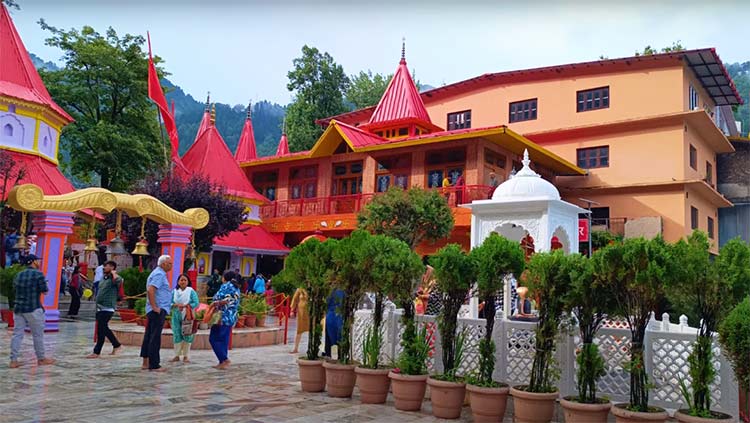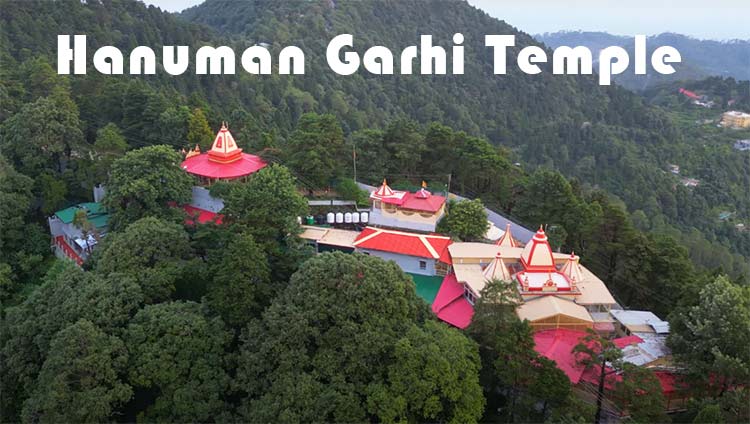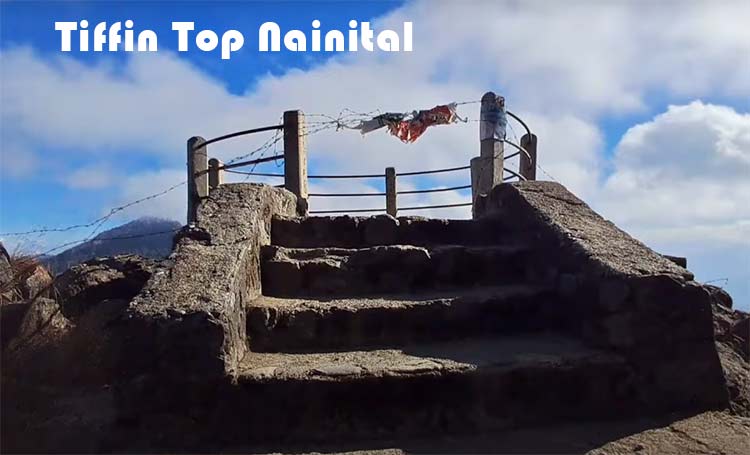Sattal Lake in Nainital is like something out of a storybook. It’s not just one lake; it’s actually a mysterious connection of seven freshwater lakes. Sattal is special because there aren’t many places like it in India with so much fresh water. This lake is still natural and hasn’t been changed by modern life. It’s a safe place for many different kinds of water animals and plants.

Historical Background of Sattal
The Sattal Lake, renowned for its divine beauty and enchanting formation, draws comparisons to Westmorland in England. During the colonial era, the British, who established colonies in Nainital, frequented Sattal for family outings and solo trips. Notably, Sattal housed one of the four Tea Plantations in the Kumaon region during this period.
Mythological Significance of Sattal
The term Sattal, derived from “Sat” meaning seven and “Tal” meaning lakes, holds profound mythological roots dating back to the era of the Indian epic Mahabharata. According to legend, the revered ruler Nala, along with his wife Damiyanti, met a tragic fate by drowning in one of the lakes during their fourteen-year exile, cursed by Nala’s brother. Consequently, one of the lakes is christened as Nal-Damyanti Tal.
The remaining six lakes are named after key characters from the Mahabharata, including Lakshman Tal, Purna Tal, Sita Tal, Sukha Tal, and Garud Tal. Originally known as Khudariya Tal, Sukha Tal underwent a transformation due to a leakage at its western end, leading to the drainage of water and subsequent drying up of the lake, resulting in its current name, Sukha Tal.
Geographical Overview of Sattal
Sattal Lake is located in the lower reaches of the Great Himalayas, positioned at an elevation of 1370 meters above sea level. This region is identified as the Mehragaon valley within the Nainital district.
Plants and Animals at Sattal
Around Sattal, you’ll find lots of green orchards and big trees like pine and oak. The forests nearby are thick, providing homes for birds that travel from one place to another and different kinds of mammals. Besides, there are many different types of plants like ferns, orchids, fungi, climbing plants, herbs with medicinal properties, and shrubs. Interestingly, each of the seven lakes has a bit different plants because of something called Diatom indices.
Fauna at Sattal
Sattal is home to a wide range of animals, including many different types of birds, fishes, and butterflies. It’s known as a great place for people who love watching birds and butterflies because of its clean water and natural environment. You can find some of the rarest butterflies here. Besides that, the lake is also a home to about 20 different kinds of mammals.
Bird Diversity at Sattal
At Sattal, there are many different kinds of birds, both those that live there all the time and those that visit during certain times of the year. In winter, around 500 types of birds fly to Sattal from the Great Himalayas. Some of the notable birds you might see include the Himalayan Griffon, Red-billed Blue Magpie, Kingfisher, barbets, parakeets, flycatchers, tits, rock thrush, babblers, owlets, woodpeckers, lammergeier, pheasants, black eagle, pigeon, minla, and more.
Fish Species :
Sattal has many different kinds of fish, like Mahseers, Catla Catla, and Labeo Rohita. The Mahseers are divided into two types: Tor Tor and Tor putitora.
Butterflies:
One of the amazing things about Sattal is the many colorful butterflies. There are about 525 types of butterflies at the lake, along with 11,000 types of moths and beetles. These delicate creatures add vibrant colors to the scenery, making it feel like a fairy tale. Some of the notable butterflies include the Indian Fritillary, blue peacock, peacock pansy, Paris peacock, red lacewing, red-base Jezebel, yellow pansy, red Helen, tawny Rajah, Indian Oakleak, large silverstripe, and more.
Enjoyable Activities at Sattal
Sattal is famous for its beautiful scenery, attracting many visitors who come to enjoy the natural beauty and a variety of activities in and around the lakes.
Camping Adventure: Experience camping by the lakeside, carefully organized by local experts. This immersive camping adventure lets you see the natural homes of local animals, giving you a chance to connect with the beauty of this place. Camping is available all year, except during the rainy season.
Boating Fun: Have an exciting time boating on the lake, allowing you to explore the wonderful beauty of Sattal up close. There are two types of boating ride available for visitors a Shikara Ride (30 mins) will cost you ₹300 and a Paddle Ride (1 hour) will cost you ₹280.
Bird Watching Journeys: Sattal is a great place for bird lovers, where you can see both local and visiting birds. Take pictures of these amazing birds flying together in groups.
Butterfly Watching Delight: Sattal is like a paradise for people who love butterflies, with over 525 different kinds. The bright colors, sweet humming, and overall beauty make this place look like a dream.
Fishing and Angling Experience: Get a permit from the local authorities to spend a relaxing day by the lake, trying out fishing and angling. The best part is, you can take your catch home or to your place and cook it.
Adventure Activities: If you love adventure, Sattal has a lot to offer, like rappelling, rock climbing, mountain biking, trekking, angling, and boating near the lake.
Butterfly Museum Visit: Explore the Butterfly Museum at Sattal, built by Frederic Smetacek at Jones Estate. The museum has over 2500 butterflies and 1100 insect specimens.
Subhash Dhara Relaxation: Recharge yourself at Subhash Dhara, a natural spring located west of the Sattal forest.
Best Time to Visit Sattal
Sattal looks incredibly beautiful during the rainy season, but it’s a bit tricky to travel there because the roads and trails can get slippery, and there’s a risk of landslides.
The best time to visit Sattal is from March to June. These months offer the most favorable conditions. Winter is also a great time to visit, especially for those who love snowfall, and it attracts a lot of tourists.
Traveler Tips
Exploring Nature: While at Sattal, take time to immerse yourself in nature. Walk around the lakeside or choose one of the many nature trails to witness the beauty of the surrounding flora and fauna.
Photography Essentials: Don’t forget to bring your camera or smartphone with you. Sattal offers breathtaking landscapes, vibrant butterflies, and diverse birdlife, providing ample opportunities for photography.
Local Cuisine Sampling: Venture into local eateries to savor the regional cuisine. Try local delicacies to enhance your culinary experience and enjoy the flavors of the Kumaon region.
Responsible Tourism: Practice responsible tourism by ensuring you leave no trace. Respect the natural environment and wildlife, and avoid littering. Contribute to the conservation efforts of this pristine destination.
Interaction with Locals: Engage with the local community to gain insights into their culture and traditions. You may discover hidden gems and receive valuable tips from the residents.
Weather Awareness: Stay updated on the weather forecast, especially if you plan outdoor activities. Being aware of the conditions will help you prepare adequately for your visit.
Educational Opportunities: Take advantage of educational opportunities at Sattal. Visit the Butterfly Museum and absorb the wealth of knowledge it offers about the diverse insect life in the region.
Guided Tours: Consider opting for guided tours or hiring local guides. They can provide in-depth information about the history, ecology, and significance of various spots around Sattal.
Health and Safety: Prioritize your health and safety. Carry essential medications, maintain hydration, and be cautious while participating in adventure activities. Familiarize yourself with the location of medical facilities in case of emergencies.
Respect for Wildlife: While enjoying the wildlife, maintain a respectful distance. Avoid disturbing the animals or their habitats to ensure a harmonious coexistence between visitors and the natural inhabitants of Sattal.
Warm Clothes : When you visit Sattal, make sure to bring warm clothes, like heavy sweaters or jackets, no matter the season. Evenings can get really chilly, and if it rains, the days can be cold too.
First Aid Kit : Also, if you plan to camp or go trekking, it’s a good idea to carry a well-prepared first-aid kit and some extra food with you.
Remember, these tips are designed by Jai Bhumia Travels to enhance your overall experience and contribute to the preservation of the unique ecological balance at Sattal.
How to reach Sattal Nainital
Address – Sattal,Chhakata Range, Nainital, Uttarakhand, 263139, India
Latitude – 29.3443° N, Longitude – 79.5294° E
By Road from Delhi: Sattal is conveniently located approximately 23 km from Nainital, 302 km from Delhi, and 355 km from Agra when traveling by road. The journey from Delhi to Sattal takes approximately 6 hours by car.
Bus Stand: The nearest bus stand is the Tallital Bus Stand in Nainital. Sattal does not have its dedicated bus stand, requiring travelers to reach Nainital or another major city by bus. From the Tallital Bus Stand, one can hire a taxi cab for a seamless journey to Sattal. For a stress-free commute, private cab services from renowned rental companies in Nainital are also available.
By Train: Sattal, retaining its natural beauty with minimal development, lacks its own railway station. The closest railway station is Kathgodam Railway Station, approximately 33 km away. Travelers can hire a bus or private taxi from the railway station to reach Sattal comfortably.
By Air: The nearest airport to Sattal is Pantnagar, situated about 67 km away. The journey from Pantnagar Airport to Sattal is easily accessible by road, offering a scenic drive to the outskirts of Nainital. Private taxi services are readily available at the airport, providing a convenient 2-hour journey to Sattal.
FAQ about Sattal Nainital
Sattal Lake stands out for being a complex interconnected system of seven freshwater lakes, offering a rare abundance of fresh water in India. Its natural and untouched state makes it a safe haven for diverse water animals and plants.
During the colonial era, Sattal was frequented by the British who established colonies in Nainital. It housed one of the four Tea Plantations in the Kumaon region, making it a popular destination for family outings and solo trips.
Sattal comprises seven lakes. In addition to Nal-Damyanti Tal, the remaining lakes are named after key Mahabharata characters: Lakshman Tal, Purna Tal, Sita Tal, Sukha Tal, and Garud Tal.
Sattal is situated in the lower reaches of the Great Himalayas, at an elevation of 1370 meters above sea level. The region is identified as the Mehragaon valley within the Nainital district.
Each of the seven lakes in Sattal has distinct plants due to variations in Diatom indices, contributing to the rich biodiversity of the area.
Sattal boasts lush orchards, coniferous trees like pine and oak, and dense forests that provide habitat for various bird species and mammals. There are different types of plants, including ferns, orchids, fungi, climbing plants, medicinal herbs, and shrubs.
Visitors can engage in camping, boating, bird watching, butterfly watching, fishing, and angling. Adventure enthusiasts can participate in activities like rappelling, rock climbing, mountain biking, and trekking. Exploring the Butterfly Museum and Subhash Dhara are also recommended.
The optimal time to visit Sattal is from March to June, with winter also attracting tourists, especially those who enjoy snowfall. The rainy season can be challenging due to slippery roads and the risk of landslides.
Travelers are advised to carry warm clothes regardless of the season, bring photography essentials, sample local cuisine, practice responsible tourism, interact with locals, stay weather-aware, explore educational opportunities, consider guided tours, prioritize health and safety, and respect wildlife.
You can discover additional Tourist Attractions by clicking the link below
Tourist Attractions in Nainital



